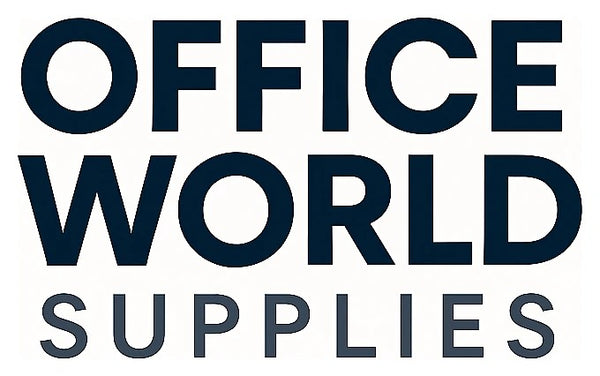The Essential Security Setup Checklist for Offices in Singapore
Share
Securing an office in Singapore requires a multi-faceted approach, encompassing physical barriers, advanced surveillance, and robust data protection. This guide provides a comprehensive security setup checklist for offices in Singapore, addressing common concerns for office admin and operations managers. From controlling access with modern systems to safeguarding sensitive information and managing visitors, effective security mitigates risks and ensures a safe, productive environment. Understanding these elements is crucial for protecting assets, personnel, and proprietary data in today's dynamic business landscape.
Establishing Robust Office Physical Security
Physical security forms the bedrock of any secure office environment. It's often the first line of defence against unauthorised access and theft. Many businesses in Singapore frequently ask about the most effective ways to secure their premises physically.
Office Door Security Singapore: Beyond the Lock
Traditional locks are a starting point, but modern offices demand more. For effective office door security Singapore businesses should consider layered defenses.
- Reinforced Doors and Frames: Upgrade standard doors to solid core or metal doors.
- High-Security Locks: Install commercial-grade deadbolts or smart locks.
- Entry Sensors: Integrate door and window sensors with an office alarm system Singapore.
- Biometric Scanners: Fingerprint or facial recognition offers advanced, keyless entry.
Office Access Control System Singapore: Managing Entry and Exit
An office access control system Singapore is vital for managing who enters and exits the premises. These systems provide accountability and flexibility, unlike traditional keys.
| System Type | Pros | Cons |
|---|---|---|
| Key Card Systems | Affordable, easy to revoke access, integrate with time attendance. | Cards can be lost or shared, less secure than biometrics. |
| Biometric Systems | High security, no lost keys/cards, audit trails. | Higher initial cost, potential privacy concerns, maintenance. |
| Mobile Access | Convenient, uses existing smartphones, remote management. | Reliance on phone battery, potential for software glitches. |
'When considering an access control system, evaluate scalability,' advises an industry expert. 'Choose a system that accommodates future growth and integrates with other security features.'
Advanced Surveillance and Deterrence
Beyond physical barriers, monitoring and immediate response systems are crucial. This includes comprehensive CCTV and reliable alarm systems.
CCTV Installation for Office: Eyes on Your Assets
CCTV installation for office spaces provides visual deterrence and crucial evidence in case of incidents. Singapore's legal framework for surveillance requires careful consideration of privacy.
- Strategic Placement: Cover all entry/exit points, sensitive areas, and perimeters.
- High-Resolution Cameras: Ensure clear footage for identification.
- Remote Monitoring: Cloud-based systems allow off-site access.
- Data Storage: Securely store footage, adhering to retention policies.
Many businesses wonder about the balance between surveillance and employee privacy. Always ensure cameras are not placed in private areas like restrooms or changing rooms. Transparent policies regarding monitoring are essential.
Office Alarm System Singapore: Prompt Response
An effective office alarm system Singapore provides immediate notification of security breaches.
Key components:
- Motion Sensors: Detect movement in unoccupied areas.
- Door and Window Contacts: Trigger alerts when openings are forced.
- Panic Buttons: For immediate distress signalling by staff.
- Professional Monitoring: Link to a security company for rapid response.
Safeguarding Information and Assets
Security extends beyond personnel and property; it critically involves data and valuable assets.
Data Security Physical Checklist: Protecting Sensitive Information
Even with digital safeguards, a robust data security physical checklist is paramount. Many ask how to protect sensitive physical documents and storage devices.
- Secure Document Disposal: Use a reliable shredder machine Singapore for confidential waste. Consider a cross cut shredder or heavy duty shredder machine for high-volume or highly sensitive documents.
- Locked Cabinets: Store physical files containing personal data in locked filing cabinets.
- Restricted Access: Limit physical access to server rooms or data centres.
- Secure Backup Media: Keep external hard drives and backup tapes in a secure, off-site location or an office paper shredder Singapore safe.
Office Safe and Lockers: Securing Valuables
For items that cannot be shredded or digitised, an office safe and lockers are indispensable. This includes cash, important documents, keys, and small, valuable equipment.
- Fireproof Safes: Protect documents and media from fire damage.
- Waterproof Safes: Guard against water damage from sprinklers or floods.
- Secure Lockers: Provide employees with lockers for personal belongings.
Visitor Management and Post-Pandemic Considerations
Modern offices also face challenges in managing visitors and adapting to new health and safety paradigms.
Visitor Management System: Controlled Entry for Guests
A modern visitor management system streamlines guest entry, enhances security, and maintains compliance. Businesses often look for efficient ways to track who is on-site.
- Pre-Registration: Allows guests to register beforehand, speeding up check-in.
- Digital Check-in: Tablets or kiosks replace paper logbooks.
- ID Verification: Integrate with scanners for ID card authentication.
- Automated Notifications: Alert hosts upon guest arrival.
- Emergency Rosters: Provides an accurate list of all personnel and visitors on-site during an emergency.
Post-Pandemic Office Security: Adapting to New Norms
The post-pandemic office security landscape has evolved, requiring new measures to ensure health and safety alongside traditional security.
- Contactless Access: Implement an office access control system Singapore with contactless features (e.g., facial recognition, mobile access).
- Health Screening Integration: Combine visitor management with temperature checks or health declarations.
- Enhanced Air Quality: Consider air purification systems as part of overall wellness security.
- Staggered Occupancy: Manage office density to maintain social distancing.
Developing a Comprehensive Security Policy for SMEs Singapore
A robust security policy for SMEs Singapore ties all these elements together. It provides guidelines for employees and defines security protocols.
Key policy areas should include:
- Access Control Procedures: Who has access, and when.
- Data Handling Protocols: How sensitive information is managed and disposed of.
- Emergency Response Plans: Procedures for fire, medical emergencies, or security breaches.
- Visitor Protocols: Clear steps for managing guests.
- Employee Training: Regular awareness sessions on security best practices.
'A well-communicated security policy is as important as the equipment itself,' notes an expert in office equipment and operations. 'Ensure employees understand their role in maintaining office security.' For more information on equipping your office, explore a wide range of office supplies Singapore.
In conclusion, a holistic security setup checklist for offices in Singapore demands attention to physical access, surveillance, data protection, and visitor management, all underpinned by a clear security policy. Regular reviews and updates, particularly in a post-pandemic world, ensure the office remains a safe and secure environment for all. Learn more about our commitments and services on our About Us page.

